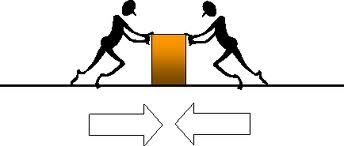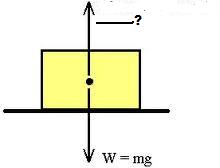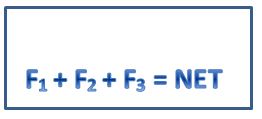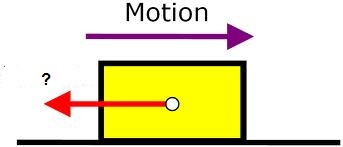Physics Final 2025
1/48
There's no tags or description
Looks like no tags are added yet.
Name | Mastery | Learn | Test | Matching | Spaced |
|---|
No study sessions yet.
49 Terms
What is the unit of electric current?
Ampere (A): The base unit of electric current in the International System of Units (SI), representing the flow of electric charge.
What does the electric potential measure?
Voltage (V): The electric potential difference, or voltage, measures the potential energy difference per unit charge between two points in an electrical field. It is what drives the electric current through a circuit.
What unit is used to measure force per charge in a given electric field?
N/C (Newtons per Coulomb): This unit measures the electric field strength, representing the force exerted per unit charge at a point in an electric field.
What does 'N' represent in physics?
Force (Newtons): In physics, 'N' stands for Newton, the SI unit of force. It is defined as the force required to accelerate a mass of one kilogram at a rate of one meter per second squared.
What signifies the opposition to the flow of electrons?
Ohm (Ω): The Ohm is the unit of electrical resistance, measuring the opposition to the flow of electric current in a circuit. A higher Ohm value indicates greater resistance.
What is the unit for magnetic field strength?
Tesla (T): The Tesla is the SI unit of magnetic field strength (also known as magnetic flux density). It measures the strength of a magnetic field.
What unit is associated with storing charge?
Farad (F): The Farad is the SI unit of capacitance, measuring a capacitor's ability to store electric charge. One Farad means the capacitor can store one Coulomb of charge at a potential difference of one Volt.
What is the measurement of how much charge an object has?
Coulomb (C): The Coulomb is the SI unit of electric charge. It is defined as the amount of charge transported by a current of one ampere flowing for one second.
What is the unit for linear speed?
Meters per second (m/s): Linear speed measures the distance traveled per unit of time in a straight line. It is a scalar quantity, indicating magnitude only.
What unit measures acceleration?
Meters per second squared (m/s²): Acceleration is the rate of change of velocity per unit of time. It is a vector quantity, having both magnitude and direction.
What is the unit of work?
Joule (J): The Joule is the SI unit of energy or work. It is defined as the amount of work done when a force of one Newton displaces an object by one meter in the direction of the force.
What is the prefix for 10⁻⁶?
Micro-: In the metric system, 'Micro-' is a prefix denoting a factor of 10⁻⁶ (one millionth). It is often used with units like meters, seconds, and amperes.
What prefix corresponds to 10⁻²?
Centi-: The prefix 'Centi-' represents a factor of 10⁻² (one hundredth) in the metric system. For example, a centimeter is one hundredth of a meter.
What does the prefix 'Nano-' represent?
10⁻⁹: 'Nano-' is a prefix in the metric system that signifies a factor of 10⁻⁹ (one billionth). It is commonly used in nanotechnology and other scientific fields.
What is the prefix for 10⁻³?
Milli-: 'Milli-' is a prefix denoting a factor of 10⁻³ (one thousandth) in the metric system. For instance, a millimeter is one thousandth of a meter.
What does the prefix 'Pico-' signify?
10⁻¹²: 'Pico-' is a prefix in the metric system that represents a factor of 10⁻¹² (one trillionth). It is often used in electronics and quantum physics.
What kind of light is used to heat food up?
Microwave: Microwaves are a form of electromagnetic radiation used in microwave ovens to heat food. They cause water molecules in the food to vibrate, producing heat.
Change in velocity over time (\Deltav/ \Deltat); vector (includes direction):
Acceleration: Acceleration is defined as the rate of change of velocity of an object with respect to time. It is a vector quantity, meaning it has both magnitude and direction.
A device that is used to detect the presence of charge is called an:
Electroscope: An electroscope is an early scientific instrument used to detect the presence and magnitude of electric charge on a body. It can indicate if an object is charged and whether the charge is positive or negative.
These are the forces that produce acceleration:
Unbalanced forces: Unbalanced forces, also known as net force, are the forces that cause a change in an object's motion, resulting in acceleration. According to Newton's second law, acceleration is directly proportional to the net force acting on an object and inversely proportional to its mass.

balanced forces

normal force

net force

friction

mass
Magnitude of a vector is indicated by
How large the arrow is drawn
Factors affecting resistance of a wire
Length of the wire, cross-sectional area, material
Q = ?
qV
P = ?
IV
Uc = ?
VC
U = ?
½ QV
V = ?
IR
I = ?
Q/t
Effect on resistance and current as resistors increase in series
Resistance increases, current decreases
If F=qvB, how does B change when v is divided by 3 (q and F constant)?
B increases by 3
True statements about stopping objects with momentum
Small force can stop large momentum if applied long enough; Greater momentum requires greater impulse; Force against motion applied long enough stops object
Tangential velocity on spinning CD as radius decreases
Velocity decreases because radius decreases
Example where work is being done
A crane lifting a car
Angle for farthest projectile range
45º
In the second right hand rule, fingers indicate
Magnetic field
Change in momentum is represented by
\Deltap or m\Deltav
Electric potential is defined as
Work done per unit charge
If mass quadruples and force is constant, acceleration
Halves
Number of pathways in a series circuit
One
Directly related physics relationships (examples)
Power & Current; Current & Voltage; Charge & Voltage; Charge & Capacitance; Potential Energy & Voltage
Magnetic field lines point
Out of north and into south pole
Net force dragging a catapult with 100 N forward force and 70 N friction
30 N
Direction of force on clothes in washing machine spin cycle
Away from the center